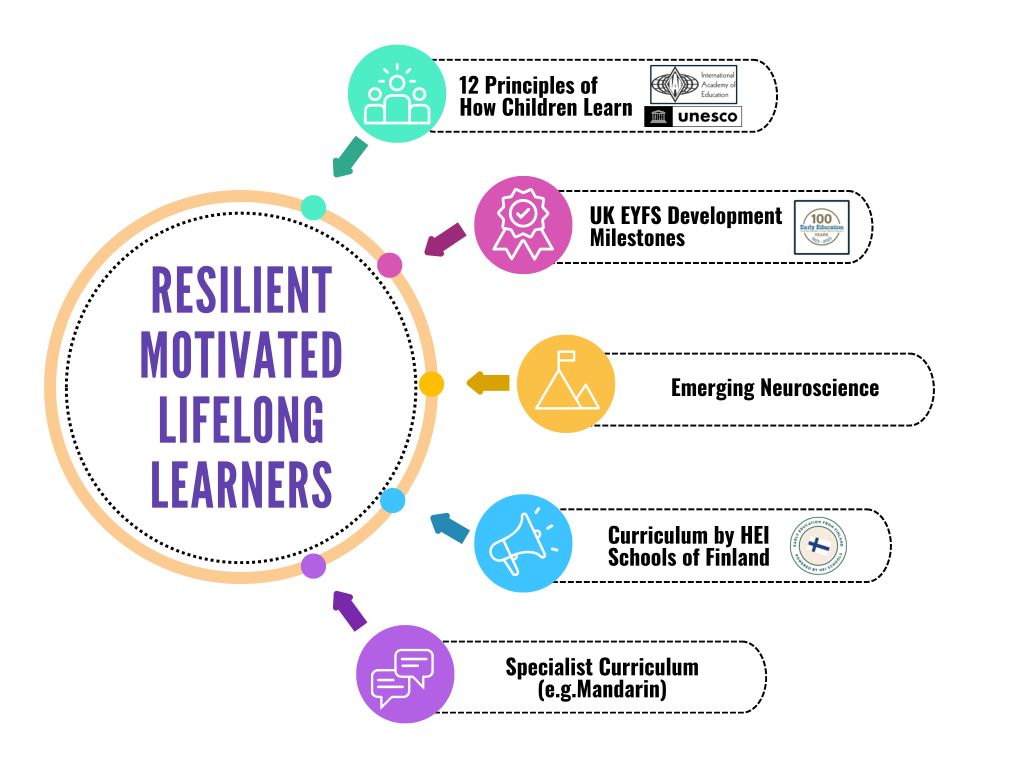
How children learn… a UNESCO report from the International Academy of Education [2002]
… From the UNESCO report on How Children Learn





“Child development – particularly from birth to five years – is a foundation for a prosperous and sustainable society”
Harvard University – Center on the Developing Child
“Connect learning to real-life situations, and focus on understanding and thinking rather than on memorisation [Rote Learning]…”
UNESCO/International Academy of Education report on How Children Learn [2002]
“Play is important to health brain development”
Kenneth Ginsburg, The American Academy of Paediatrics
“Inquiry-based learning is part of the HEI School curriculum approach; it involves a collaboration between children and teachers”
HEI School of Finland
“The building blocks of life-long learning: Social & Emotional; Physical; Language; Cognitive”
UK Department of Education Early Years Foundation Stage (EYFS)

The Purple Dragon approach is rooted in tried and tested child education research and overlaid with emerging neuroscience and new education research into how children learn, develop and thrive. The Harvard University Centre on the Developing Child asserts that the first 5 years of a child’s life are crucial to healthy brain development AND that it takes approximately 400 repetitions to learning something new, unless the learning takes place via play in which case it only takes 10-20 repetitions! This knowledge, based on in-depth research by our founders, has been curated to create an optimised environment for children to become resilient, motivated, lifelong learners, and to maximise the vital early years development opportunity, with the aim of preparing children for primary school and beyond.
Lorem ipsum dolor sit amet, consectet adipiscing elit,sed do eiusm por
Lorem ipsum dolor sit amet, consectet adipiscing elit,sed do eiusm por
Lorem ipsum dolor sit amet, consectet adipiscing elit,sed do eiusm por
Lorem ipsum dolor sit amet, consectet adipiscing elit,sed do eiusm por
At Purple Dragon we know the importance of a welcoming, child-friendly environment that is both comforting and stimulating. We have put a lot of effort into making each classroom feel like a great place to spend time with friends and at the same time encourage learning and development. In addition, we have both indoor and outdoor physical exercise and role play facilities and a nutritious in-house menu to ensure both body and brain are well nourished.







… From the UNESCO report on How Children Learn
